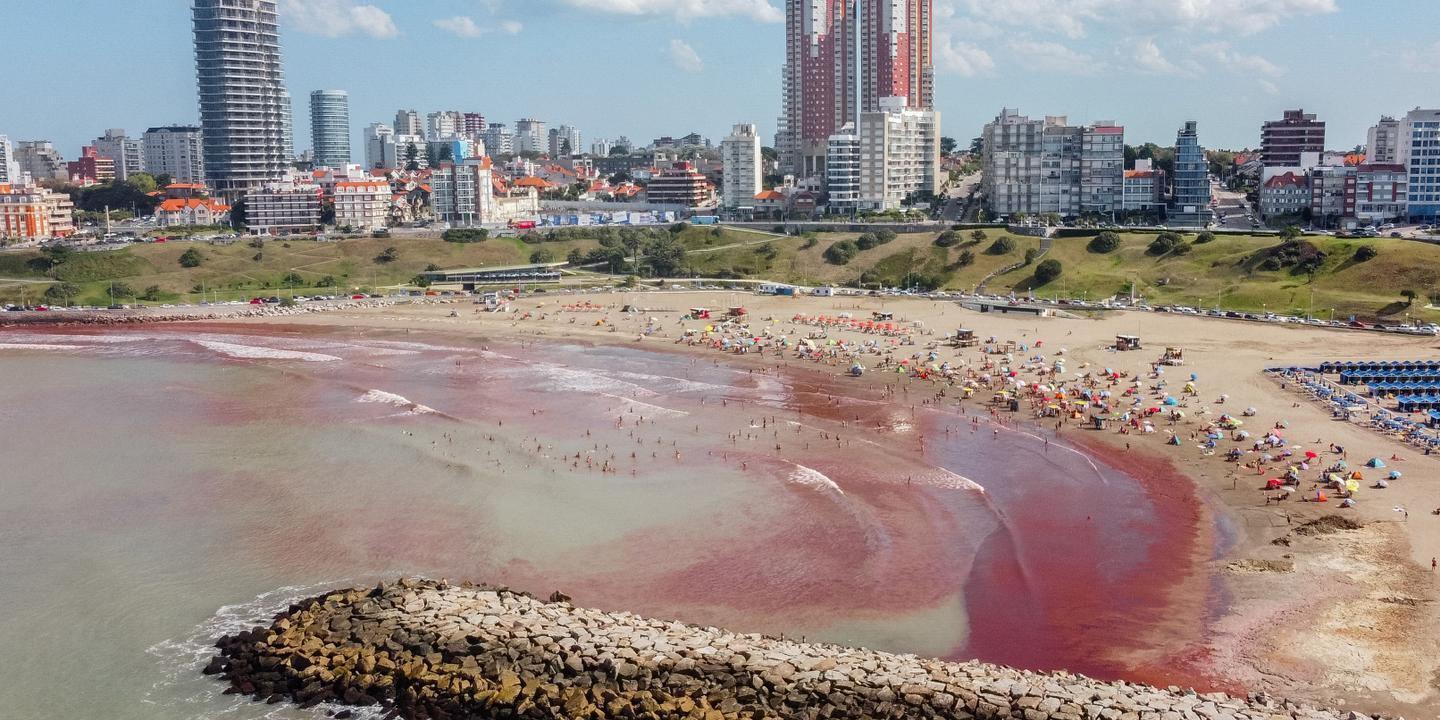
Spectacular "Red Tide" Washes Up on Argentine Beaches
Argentina’s Atlantic coast has been painted a vibrant crimson in recent days, as a natural phenomenon known as a "red tide" blankets beaches during the height of the summer season.
The red tide is caused by a proliferation of macroalgae, which are large underwater seaweeds. When these algae detach from their rocky underwater homes and are carried ashore by strong currents, they create a striking spectacle on the sand.
The phenomenon is not uncommon during the summer months in Argentina, but this year’s bloom has been particularly intense. In popular beach towns like Mar del Plata, the algae have emitted a strong odor after baking in the sun, causing discomfort for many swimmers.
"This is a natural phenomenon that we call ‘arribazones’ [or ‘mega-arrivals’] of macroalgae," explained Ricardo Silva, a marine biologist at the National Institute for Fisheries Research and Development (Inidep). "These algae live attached to rocky substrates underwater, but they can detach under the influence of strong waves, and the currents carry them to the coast."
It is not yet clear whether the increased frequency of red tides in Argentina is linked to climate change. Silva noted that there has been an increase in "atypical" northeasterly winds, which could be a contributing factor. However, he emphasized the need for long-term studies to establish a definitive relationship.
Last week, a lake in northeastern Argentina turned an eerie shade of green, giving its capybara inhabitants a Hulk-like hue. This phenomenon was caused by cyanobacteria, a type of microalgae whose proliferation is partially attributed to climate change.
The red tide on the Atlantic coast has raised concerns among environmentalists, who worry that it could be a sign of pollution. However, preliminary analysis has ruled out the presence of cyanobacteria and other potentially toxic bacteria.
On the outskirts of Buenos Aires, a different kind of red tide has emerged: a stream known as the Sarandi turned a deep crimson a few days ago, prompting alarm among residents. Initial investigations suggest that the pollution was caused by industrial pigments used in tanneries, food processing plants, textile factories, and pharmaceutical companies.
The provincial environmental ministry is currently inspecting industrial facilities that use these pigments in the area. The authorities have emphasized that preliminary analysis has ruled out the presence of potentially toxic cyanobacteria and bacteria.
The red tide on Argentina’s beaches serves as a reminder of the complex interactions between the natural world and human activities. While some red tides are caused by natural factors, others can be exacerbated by pollution and climate change. As scientists continue to study these phenomena, it is essential to take steps to protect the health of our oceans and coastal environments.
